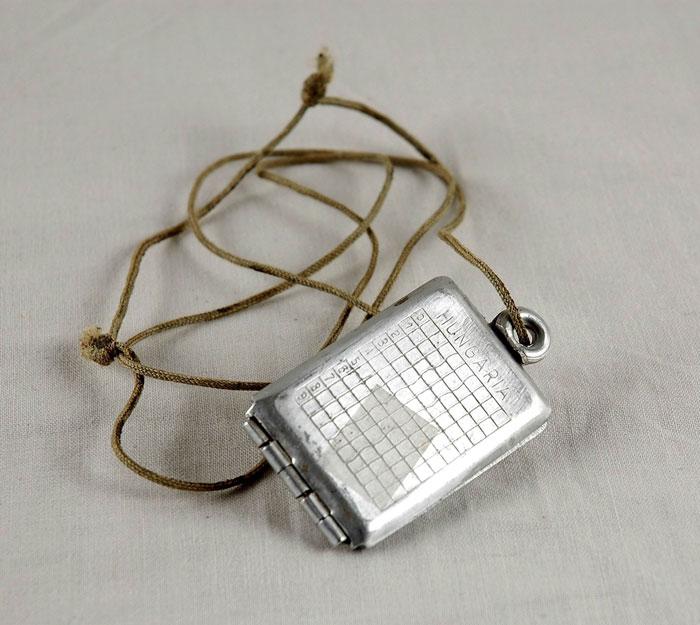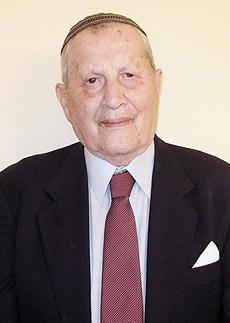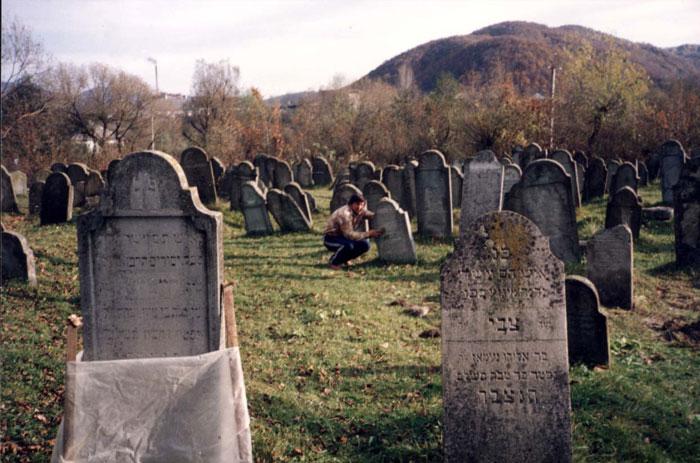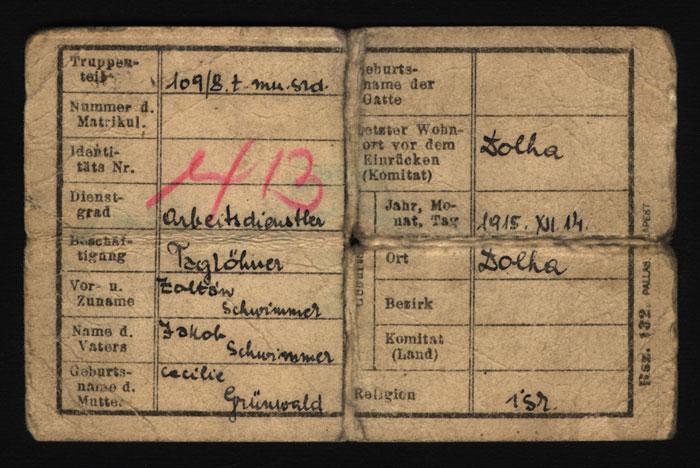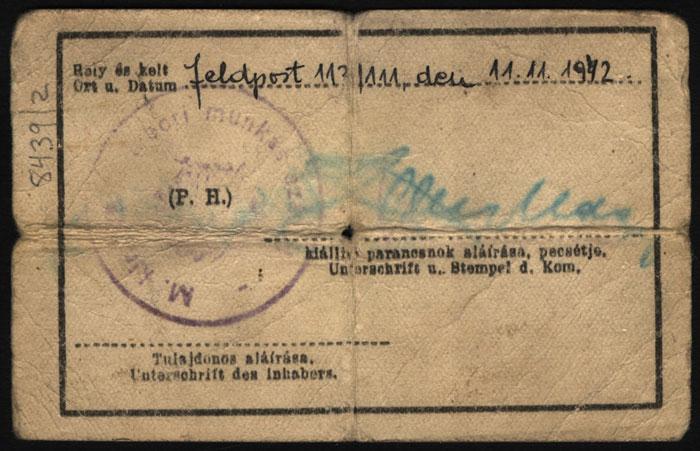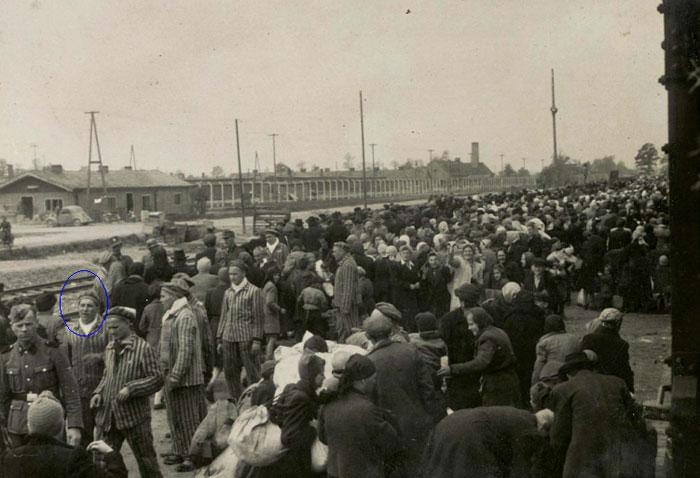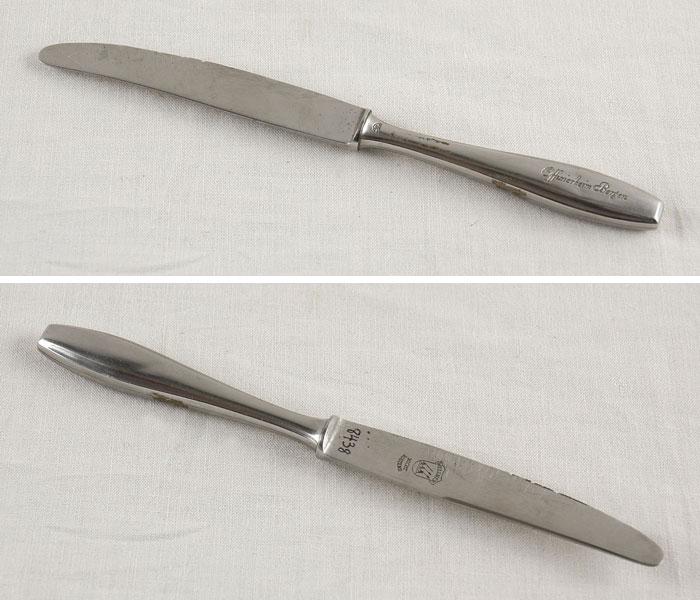Zalman Schwimmer was born in 1915 in Dovhe, a town in the Ukranian Carpathian mountains. In 1936, Zalman began his medical studies at the University of Brno (Brünn), but when the Nazis entered Czechoslovakia in March 1939, he was expelled together with all the other Jewish students. Towards the end of 1939, after emigration became impossible, he returned to his native town of Dovhe, which was then occupied by the Hungarians. At that time the Hungarian regime began to impose anti-Jewish laws and established forced labor camps for Jews. Like all Jewish men between the ages of 20-45, Zalman was drafted into a Hungarian forced labor battalion. After a few months, he was released and returned home to Dovhe.
In 1940 the Hungarian regime required all the Jews from the Carpathians to prove their Hungarian citizenship or face deportation. Zalman was successful in securing temporary residence permits for many people in his town and the surrounding area who thus avoided deportation. Throughout 1941, the Fascist Hungarian regime deported Jewish families with children from the Carpathians, because they could not obtain Hungarian citizenship and were regarded as foreigners. They were deported over the border, into German-occupied territory and approximately 14,000 were murdered in Kamenetz-Podolsk.
Early in 1942, having failed in his repeated attempts to flee, Zalman, along with thousands of Jewish males, was drafted again into one of the hundreds of labor camps and was stationed in Vac, near Budapest. From there, his battalion was sent into the Soviet-occupied territories in Ukraine and assigned to slave labor behind the battlefronts. The work was impossibly hard and was done under the watchful eye of the Hungarian guard officers and their collaborators, who were given a free hand in the treatment of the laborers. After the German and Hungarian withdrawal in 1943, tens of thousands of Jewish forced laborers starved to death, or were murdered by their Hungarian officers and Ukranian guards. In March 1944, Zalman's battalion returned from the Soviet-occupied territories and he returned to Dovhe, but in May the Germans occupied Hungary and with the collaboration of the Hungarian regime, chased the Jews from their homes, first from the Carpathians and subsequently from the surrounding areas. Zalman and his family were deported to ghetto Berehovo (Bereqszasz) and on May 15, 1944, they were sent from there to Auschwitz.
From Auschwitz, Zalman was sent to the Wolfsberg camp, which was part of the Gross-Rosen complex. Under terrible conditions and inhumane surroundings, inmates were forced to build roads in the mountains and carry iron tracks on their shoulders. On February 15, 1945, Zalman left Wolfsberg together with all the ambulatory inmates who were evacuated in a death march lasting two weeks. They arrived at Bergen-Belsen along with thousands of others who had barely survived the death marches. In this camp they found themselves sharing living space with hundreds of corpses. These conditions resulted in the rapid spread of typhus and Zalman was among the few who managed to survive the final weeks until liberation by British forces on the April 15, 1945.
Yad Vashem Artifacts Collection
Gift of Sidney (Zalman) Schwimmer, Florida, USA and Netanya, Israel
